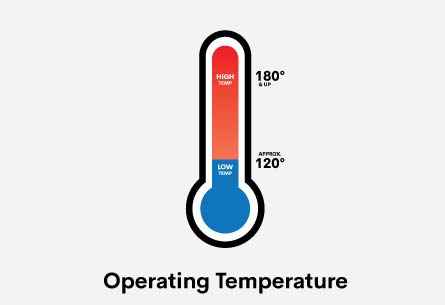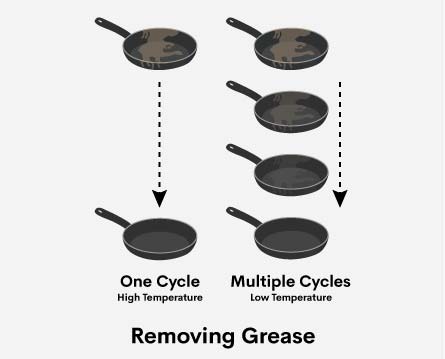Explaining the difference for these restaurant industry workhorses
We all know the importance of a commercial dishwasher. Lipstick leftover on glasses and burnt-on residue on plates can transform an Instagramable moment into a horrible Yelp score – and a failing restaurant. That’s why the foodservice industry invests in dishwashing units that eliminate food debris, grease and more. That being said, should restaurants buy a low-temp or a high-temp dishwasher?
HUNG UP ON HEAT
Both dishwashers utilize about the same temperature of water to wash dishware – approximately 140 to 150 degrees. The distinction occurs during the rinse cycle, or sanitation.
High-temperature: a minimum of 180 degrees Fahrenheit.
Low-temperature: approx. 120 degrees Fahrenheit. Instead of utilizing heat to sanitize, these dishwashers rely on a chemical sanitizer.
DEBATING DEBRIS
High-temperature dishwashers are better served to eliminate unruly residue in one cycle, while a low-temperature dishwasher may need an additional cycle.
CALIBRATING COSTS
High-temp dishwashers typically cost more.
STEAM & VENTLESS TECHNOLOGY
In general, low-temperature dishwashers create very little steam, but high-temperature dishwashers are more likely to. That’s why they have often been purchasedwith a vent hood system, to capture steam so it does not damage surrounding areas. In the past, steam stopped foodservice operators from purchasing high-temp dishwashers in customer-facing areas like a bar. Then CMA changed the restaurant industry.
To alleviate steam in high-temperature dishwashers, it created a “Ventless” heat recovery and condensation removal option. The system recirculates heat and utilizes it to pre-heat cold water prior to feeding the booster heater, leading to lower operation costs.
READY TO INVEST? PICK A DISHWASHER
In general, low-temp machines are more energy efficient and cheaper to repair. High-temp machines are better workhorses in a busy foodservice operation and don’t need the ongoing cost of chemical sanitizer. Both low and high temperature dishmachines are available in undercounter, upright and conveyor styles.
Still, much of this comes down to expected usage and personal choice. It’s a more important decision when debating which unit to place in a busy restaurant. It’s less vexing if you’re adding a dishwasher to a day care, church or a foodservice operation which doesn’t expect constant usage.







